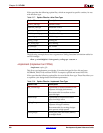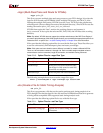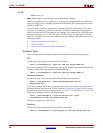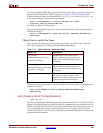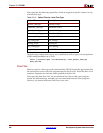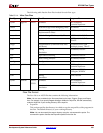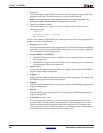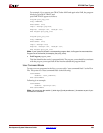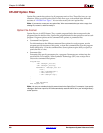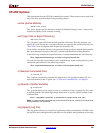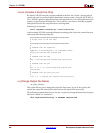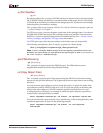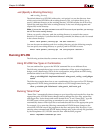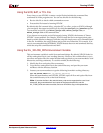
358 www.xilinx.com Development System Reference Guide
Chapter 23: XFLOW
R
• ReportDir
This section specifies the directory in which to copy the report files generated by the
programs in the flow. The default directory is your working directory.
Note:
You can also specify the report directory using the –rd command line option. The
command line option overrides the ReportDir specified in the flow file.
• Global user-defined variables
This section allows you to specify a value for a global variable, as shown in the
following example:
Variables
$simulation_output = time_sim;
End variables
The flow file contains a program block for each program in the flow. Each program block
includes the following information:
• Program program_name
This line identifies the name of the program block. It also identifies the command line
executable if you use an executable name as the program_name, for example, ngdbuild.
This is the first line of the program block.
• Flag: ENABLED | DISABLED
♦ ENABLED: This option instructs XFLOW to run the program if there are options
in the options file.
♦ DISABLED: This option instructs XFLOW to not run the program even if there are
corresponding options in the options file.
• Input: filename
This line lists the name of the input file for the program. For example, the NGDBuild
program block might list design.edn.
• Tr ig ger s:
This line lists any additional files that should be read by the program. For example, the
NGDBuild program block might list design.ucf.
• Exports:
This line lists the name of the file to export. For example, the NGDBuild program block
might list design.ngd.
• Reports:
This line lists the report files generated. For example, the NGDBuild program block
might list design.bld.
• Executable: executable_name
This line is optional. It allows you to create multiple program blocks for the same
program. When creating multiple program blocks for the same program, you must
enter a name other than the program name in the Program line (for example, enter
post_map_trace, not trce). In the Executable line, you enter the name of the program as
you would enter it on the command line (for example, trce).



